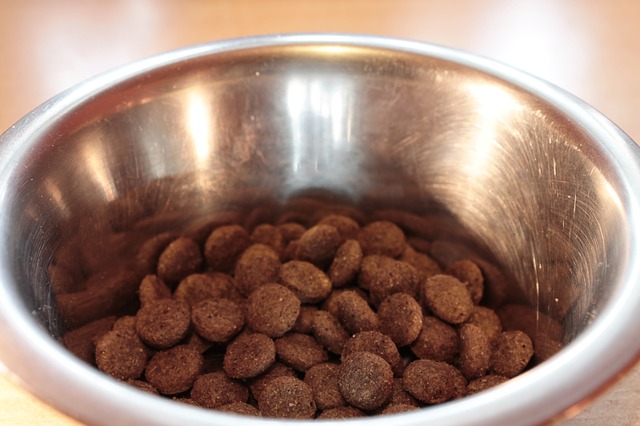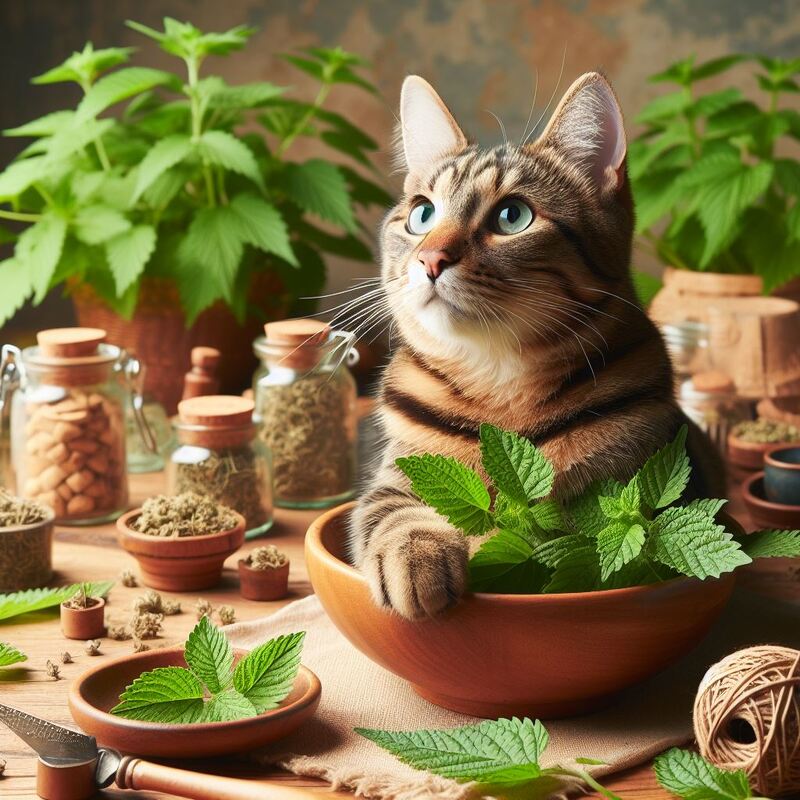The Pet Food Elements Chessboard
Contents
- 1 The Pet Food Elements Chessboard
- 1.1 The Key Is Genetics
- 1.2 The Cost of Disease
- 1.3 The Ideal Food
- 1.4 The Profiteers have arrived.
- 1.5 Dangers of Raw Frozen Pet Food
- 1.6 Grade Human
- 1.7 Pet nutrition is a severe medical science.
- 1.8 Consumers are to blame.
- 1.9 Are By-Products Dangerous?
- 1.10 Pets Killed on the Road and Those Who Have Been Euthanized
The Pet Food Elements Chessboard
The Pet Food Elements Chessboard: I began developing pet foods around 25 years ago, when the entire pet food industry appeared to be in a dilemma, focusing on protein and fat levels with no consideration for ingredients. Because boot leather and soap could manufacture pet food with “perfect” percentages, it was evident that analytical percentages do not tell the whole storey regarding pet food value. A piece of food is only as excellent as the ingredients in it, and I’ve been convinced of this since I was a kid.
These ingredients have been increasingly popular in pet food recently. Food quality and proper feeding techniques have been compromised as a result of its commercialization. Is health dependent on the substances a commercial product contains or does not contain? No, as contradictory as that may appear to what I’ve just said, it isn’t. This is why.
Approval by AAFCO
Animal diets can contain a wide variety of chemicals, according to the American Association of Feed Control Officials (AAFCO). Authorized ingredients may include:
garbage dehydrated
processed animal waste that has not been dried
Polyethene roughage substitution (plastic)
poultry feathers hydrolyzed
hair hydrolyzed
leather dinner hydrolyzed
A byproduct of a poultry hatchery
tankage of beef meals
hulled peanuts
almond shells, ground
At the same time, this same regulatory agency forbids the use of several proven beneficial natural substances that are widely available for human consumption, such as bee pollen, glucosamine, L-carnitine, spirulina, and many other nutraceuticals. It would be simple to assume that when it comes to what officially may and cannot be used in pet diets, logic does not always prevail.
The authorities operate under the basic nutritional assumption that percentages determine the worth of food and that no particular ingredient has exceptional merit. They reject the tens of thousands of scientific research articles demonstrating that the type of component and its quality can significantly impact health. The negative impacts of food processing, as well as those of time, light, heat, oxygen, and packaging on nutritional and health value, are all left unaddressed.
The Complete Myth
Consumers are becoming more aware of the benefits of eating more natural foods. Everyone intuitively understands that the closer the diet is to natural, fresh, wholesome foods, the greater the likelihood of excellent health. Unfortunately, this common logic is not applied to pet foods. Instead, they buy “100% complete” processed goods, possibly even going so far as to choose “super-premium” or “natural” labels, believing they are doing the best they can. They completely lose their minds to a marketing trick and subject their pets to what they would never subject themselves or their families too – eating the same packaged product at every meal, day in and day out. There is no such thing as “100% complete” processed food since no one on the globe knows everything there is to know about nutrition. On the surface, the allegation is ludicrous. Understanding this basic premise is more vital than any pet food composition, regardless of its contents’ advantages. Everything that follows will start with that premise: no food should be fed entirely continuously, regardless of the promises of completeness or ingredient quality.
The Key Is Genetics
Pets require the diet to which they are biologically adapted. It all depends on the situation. A pet requires its natural food environment to be healthy, much as a fish requires water to stay healthy. All organisms must remain faithful to their nature. What could be more prominent or straightforward? The correct genetic match for a carnivore is prey, carrion, and incidental fresh plant material, as well as some fur and feathers and the occasional surprise of unmentionables discovered in decaying stuff. It’s not a nice picture to think that “FiFi,” with her pink ribbon and polished toes, would eat such food, but it’s exactly what she’s designed to eat. Matching food to her design (without the more nasty and superfluous elements) is also the key to her health because that is her design.
The Cost of Disease
We may prefer to feed a packed, sterilized, steam-cleaned, dried, farinaceous chunk neatly formed like a pork chop, but let’s not fool ourselves: it is not the meal a pet is created for regardless of the boasts about ingredients on the label that make one think it is five-star restaurant fare. Pets may endure such a diet for a while, but nature will eventually catch up with them. Loss of health due to infection susceptibility, dental disease, premature ageing, obesity, heart and organ disease, diabetes, cancer, arthritis, and other cruel and painful chronic degenerative diseases is the price we have to pay. We protect our pets from the harsh conditions of nature, where they would succumb to such conditions and end their torment, so they languish in our safe havens and under veterinarian care that doesn’t usually heal but only treats symptoms and prolongs the period of suffering in our homes. Feeding our pets, not the ingredients in allegedly complete pet food, is where the pain begins.
The Ideal Food
What is the answer? It’s simple, and I’ve been preaching it for the past 25 years. Return pets to their natural habitat. It’s essential that they have access to a variety of stimuli, including regular exposure to nature, clean water, fresh air, and plenty of affection. Fresh, entire natural foods appropriate for a carnivore, fed in diversity, are the best. Anything less is considered a compromise. If health is the goal, make the fewest compromises possible. (The same is true for you and your family.) It is necessary to have a correct feeding philosophy and the ability to develop and manufacture packaged foods in order to get as close to that aim as possible.
The Profiteers have arrived.
Elements of these principles have been adopted (sometimes misinterpreted or misunderstood) by a never-ending stream of pet food businesses. Low-fat pet meals arose as a result of the low-fat fad. High fibre pet meals arose as a result of the high fibre mania. Because of the “no corn, wheat, or soy” obsession, there are no corn, wheat, or soy pet foods. The “omega-3” craze resulted in pet diets containing fish oil. The “variety” obsession spawned pet foods ostensibly giving variation. All four were packed into a box because of the “four food categories” mania. The “raw” food fad has resulted in raw frozen pet foods. The list goes on and on, and the race for pet owner funds is at an all-time high.
One can only sympathize with a worried pet owner as they walk down the pet food aisles, which are brimming with a dizzying number of pet food options. Unfortunately, armed simply with sound bites and lore they may have heard from a friend, breeder, doctor, or on a commercial, people make decisions that not only do not support their pet’s health but may also contribute to decreased immunity and disease.
The recommended diet for pets, as indicated above, should be the primary consideration for buyers. No packaged product, no matter how outrageous its claims, will ever be able to compete. The next best thing is to prepare fresh meals at home. (For recipes and instructions, contact Wysong.) If this is not always achievable, products as close to the ideal as possible should be chosen. (More ideas are provided below.)
Dangers of Raw Frozen Pet Food
At first sight, given the ideal feeding model I’ve described – raw, natural, and whole – the best meal may appear to be one of the raw frozen pet foods presently vying for the “raw” fad. Regrettably, some of these purveyors even exploit my books and literature to persuade pet owners that their frozen items are safe. They take good information and distort it into something that completely misses the point and misleads people. Furthermore, these strange frozen concoctions of unknown origin, production, and freezing conditions are neither inexpensive nor the best choice. They could be pretty harmful because of the water content and raw nature.
Grade Human
Then there are promises about “USDA approved” ingredients, “human grade” ingredients, and ingredients obtained directly from the grocery store’s meat counter. Again, such items may appear better than others at first glance – and superficiality is what marketers love to feed off of these days.However, such labels merely serve to establish a perception of quality. People would not consider the food that pets are meant for in the wild – entire, raw prey and carrion – to be “human grade” or “USDA approved.” The fact that something is not “human grade” does not imply that it is unhealthy or unnutritious. Chicken viscera, for example, is not “human-grade,” but it has more excellent nutritious value than a pure white chicken breast. Many people in the United States believe that chicken feet are unfit for human eating, while many people in the Far East enjoy them. If fed primarily, “human quality” beef steaks offered to pets could create significant nutritional imbalances and disease. Pet foods that offer a superficial image of quality (USDA, human-grade, etc.) to persuade pet owners to give a specific diet exclusively are not what health is all about.
Pet nutrition is a severe medical science.
Pet nutrition isn’t about marketing or who can make the most money the fastest. Unfortunately, any wannabe pet food tycoon may go to any number of private-label producers and create a new brand. These companies have a large stock formula that may be slightly adjusted to reflect the current market trend. Voilà! A new fantastic brand of pet food is produced.
Pet meals are about nutrition for pets, and nutrition is a critical health issue. Going to market with things that can have such a profound influence on health implies an underlying ethic. However, ethics is mostly lacking in the pet food market. Health is not being served, beginning with the 100 per cent claim and continuing with all of the fad-driven companies that clog the shelves. Nobody but our group teaches the principles I’m about to outline here. Instead, corporations led by persons with no technical, nutritional, food processing, or health expertise present themselves Because it is what the public wants to hear and what sells, they are as serious as possible about health. regardless of whether producers truly comprehend or are capable of implementing healthy concepts. The façade sells, and the game is to sell. True, ingredients are vital, but the producer’s knowledge and principles in selecting, preparing, storing, processing, and packaging them. Consumers have a high level of trust that generic processed nuggets are what they are told to believe they are. A lot of slips might happen between the cup and the lip. Numerous slips can occur between the cup of marketing claims and what ends up in the pet food bowl’s lips.
Consumers are to blame.
In this awful – continuous diet of packaged pet food – approach to pet feeding, the consumer bears some blame. They want everything to be cheap and straightforward. They don’t want to study or exert too much effort, and they prefer simple criteria to base their selections on, such as “corn, wheat, and soy are evil,” or “USDA approved,” or “human-grade” or “organic is good.” They, too, desire something for nothing and believe that they may find it in pet food. People desire prime choice meats, organic and fresh items neatly packaged in an easy-open, easy-pour box, ideally at 50 cents per pound. They might even pay $1 or more if the producer can persuade them of how unique they’re selling or how much more cancer their pet might acquire if they used a different brand.
Are By-Products Dangerous?
Thousands of tonnes of byproducts that cannot be sold to people are produced during the manufacturing of human foods. Does this render them ineffective, if not inferior? No. Trimmings, viscera, organs, bones, gristle, and anything else that humans do not want are examples of byproducts. Should these perfectly nutritious things be thrown away? As I previously stated, as the Earth’s resources continue to dwindle and people across the world suffer hungrily, should we feed our dogs only “human grade” meals and throw out perfectly edible – and often even more nutritious – byproducts? What makes that acceptable or justifiable for either the consumer or the producer?
Pets Killed on the Road and Those Who Have Been Euthanized
This transition to “human grade” pet foods is partly due to several myths that have grown far stronger than they deserve. It has become common knowledge in the marketplace that roadkill and euthanized pets are utilized in pet foods. I’ve never seen the substantiation supporting this absurd claim, and in twenty years of investigating ingredient suppliers, I’ve never discovered one. Spectacular myths, on the other hand, thrive on life, and the more fantastic they are, the more life they have. It’s the intellectually lazy path and the source of so much unhappiness. Racism, sexism, religious persecution, and warfare result from sloppy superficial thinking. People would like to believe that the universe is divided into right and wrong, good and evil, and black and white. Marketers take advantage of this by making clear contrasts for consumers to grasp: human-grade = good/all others = evil; organic = right/all others = wrong; rice = white/corn and wheat = black. Such crude and naive distinctions are quick and easy for advertisers and salespeople to exploit to alter public opinion. But no one, if they took a step back and used common sense, would ever believe that anything as complex as health could ever be derived from what is or is not in a packaged bag of food. Reality isn’t black and white; it comes in various hues of grey. Before making decisions, greyness necessitates some knowledge, judgement, and discernment. It takes a bit more effort, but it is what we must all do if the world becomes a better place for people and pet health to improve.





Your insights on the pet food industry resonate deeply with those of us who care about the nutritional welfare of our pets. It’s refreshing to see a shift towards valuing quality ingredients over just meeting analytical standards. The emphasis on wholesome components reflects a growing awareness among pet owners, and it’s encouraging to think that we are moving toward more informed choices for our furry friends. As we navigate this commercialization landscape, the focus on health and quality can lead to better products and, ultimately, healthier pets. Your commitment to this cause over the years is truly inspiring!
It’s refreshing to see someone tackle the pet food industry with such a critical eye. The focus on real ingredients over just hitting the right percentages is so crucial. It’s wild how many “perfect” formulas get marketed without considering what actually goes into them. Pet food should be more than just numbers on a label. Pets deserve better than boot leather in their bowl, right? It’s all about quality over quantity, and that message definitely needs to get more traction within the industry. Let’s keep pushing for transparency and better choices for our furry friends!
It’s great to see your passion for this topic. You’re spot on—too often, the focus on achieving the right percentages overshadows what really matters: the quality of ingredients. Pets are family, and they deserve meals that reflect care and respect for their health.
You brought up some vital points that often get lost in the noise of marketing. It’s true that pets should be treated to nutritious meals, not just the latest lab-created formulas designed to meet calorie counts. The industry has led us to believe that if a label checks all the boxes, it’s good enough. But when you start looking closely at the ingredients, it’s shocking how many fillers and low-quality components make the cut.
You’ve touched on a crucial aspect of pet nutrition that definitely deserves more attention. The marketing around pet food can be incredibly misleading, and it’s easy for pet owners to get caught up in the labels and promises without digging deeper. I’ve noticed that many people assume that if a product is on the shelf, it must be safe and beneficial. It really takes some effort to break through that facade.
You’ve touched on such an essential point that many people overlook. When it comes to our pets, it really shouldn’t just be about checking off a list of nutrients and calories. Nutrition for animals is so much more than the numbers on a label. I think it’s easy to get caught up in marketing buzzwords that make products seem like the ultimate solution. Many of us assume that if it’s on the shelf, it must be safe and effective, but looking closely at ingredient lists can reveal a different story.
You’ve hit the nail on the head with your thoughts on the pet food industry. It really does feel surreal how many so-called “perfect” formulas roll out without a second thought on the actual ingredients. Pet food shouldn’t just be a numbers game—it needs to reflect quality and care.
It’s interesting to see how the focus on ingredients has evolved in the pet food industry over the years. Your perspective on the need for quality over simply meeting analytical percentages resonates strongly with me. I’ve often felt that just because a product can claim to be “complete” on paper doesn’t necessarily mean it’s good for our pets.
Your reflections on the evolution of the pet food industry resonate deeply, especially in light of today’s heightened awareness around pet nutrition. It’s fascinating how your journey began 25 years ago amidst an industry fixated on percentages rather than the source and quality of ingredients. This dilemma you highlight—where a product could hypothetically meet all regulatory requirements yet still be subpar due to its components—really shines a light on a pervasive issue in many food industries.
It’s so refreshing to see someone tackling the core of pet food ingredients head-on! I’ve always believed that what goes into our pets’ meals matters more than strict adherence to nutritional percentages. It reminds me of the farm-to-table movement in human food; the same principles apply to our pets.